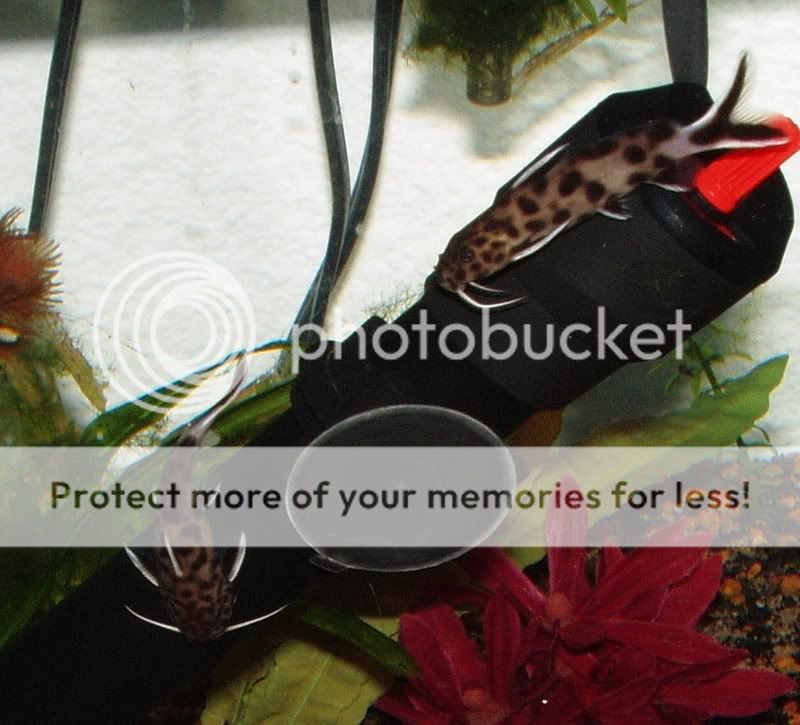It doesn't give the size. Also mine have the white peticola like edge on the dorsal and pectoral.
Did you look at this one?
S. lucipinnis
"Lake Tanganyika is renowned for its beautiful and unusual cichlids, but it has catfish all of its own too. Amongst these catfish are some of the most attractive, rare, interesting and expensive of all catfish in the aquarium hobby today.
For a long time, Synodontis lucipinnis was known to be different from the similiar Synodontis petricola primarily as it was smaller in adulthood - hence the "working title" Synodontis sp. cf. petricola `dwarf`. Intriguingly, it is similar to other described catfish from the lake. The cuckoo catfish, Synodontis multipunctatus, is the most common import and you, occasionally, may also encounter S. polliem>, S. dhonti and S. tanganaicae. All sport the distinctive white barbels and are spotted as juveniles to some degree or other and thus another form of quick identification prevails -
S. petricola and S. lucipinnis are the only species with a solid white leading dorsal and pectoral fin ray and the spotted body pattern. The number of spots can vary: the images above show a darker, more spotted 4" (SL) adult (above) and lighter, lesser spotted 1" / 2.5cm (SL) youngster (below). Although it is a dwarf form, S. lucipinnis has all the visual characteristics of S. petricola except, crucially when looking at younger fish, shows a light patch of colouration in the rayed fins."
[excerpted from the article above. High lights added]
This seems to match closest, so far--to me. What do you think? The more I look and reread it the more it seems right. I was kinda hopin for some exalted illumination from LL or CFC.

But of course glad to chat with you. fishfishfish. Thanks for chipping in. I value your input.










 /www.planetcatfish.com/catelog/speci...species_id=1315
/www.planetcatfish.com/catelog/speci...species_id=1315 But of course glad to chat with you. fishfishfish. Thanks for chipping in. I value your input.
But of course glad to chat with you. fishfishfish. Thanks for chipping in. I value your input. 
